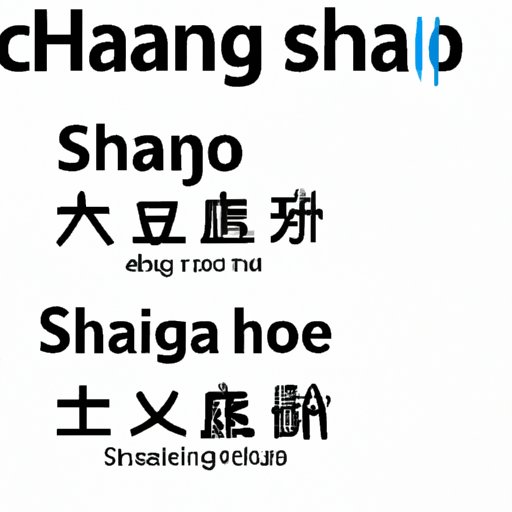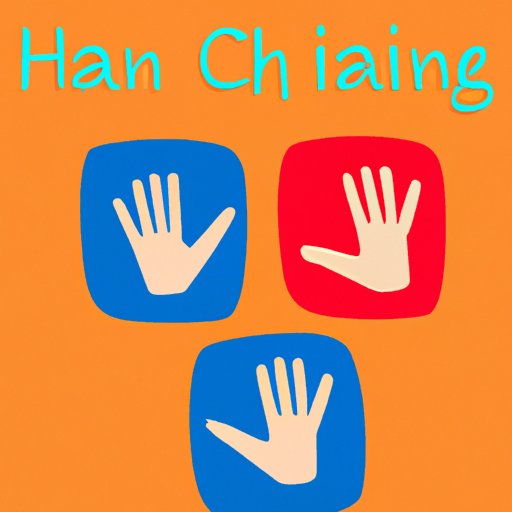Introduction
Have you ever found yourself in a situation where you need to say hello in Chinese, but you have no idea how? It’s a common problem for many people who are new to Chinese language and culture. Fortunately, learning how to say hi in Chinese is not as difficult as it seems. In this article, we will explore various ways to say hello in Chinese, the cultural significance of greetings in Chinese culture, and tips on how to master Chinese greetings like a pro.
5 Simple Yet Effective Ways to Say Hello in Chinese
There are several ways to say hello in Chinese, but the most commonly used ones are:
- 你好 (nǐ hǎo) – This is the most basic and common way to say hello in Chinese. It can be used in any situation, formal or informal.
- 您好 (nín hǎo) – This is a more formal way of saying hello and is usually used with people who are older or in higher positions than you.
- 早上好 (zǎo shàng hǎo) – This means “good morning” and is used specifically in the morning.
- 下午好 (xià wǔ hǎo) – This means “good afternoon” and is used specifically in the afternoon.
- 晚上好 (wǎn shàng hǎo) – This means “good evening” and is used specifically in the evening.
It’s important to note that Chinese language relies heavily on context and the relationship between speakers. Therefore, the appropriate greeting to use in a given situation can vary based on factors such as age, status, and familiarity.
Master Greetings Like a Pro: How to Say Hi in Chinese
Greetings are an important part of Chinese culture. In fact, the way one greets another person can tell a great deal about their relationship and social status. There are various types of greetings in Chinese, including formal and informal greetings, greetings for different occasions, and regional dialects. Here are some key Chinese greetings:
- 拜年 (bài nián) – This is a traditional Chinese New Year greeting. It literally means “pay a New Year’s visit” and is used to express well wishes for the coming year.
- 问好 (wèn hǎo) – This is a formal greeting that can be used in written or spoken form. It is often used between business partners or in professional settings.
- 祝好 (zhù hǎo) – This is a more personal greeting that expresses good wishes for the recipient’s well-being. It can be used in various situations, both formal and informal.
When greeting someone in Chinese, it’s important to pay attention to body language and tone of voice, as these factors can convey additional meaning and show respect.

Learn Chinese Greetings: From Ni Hao to Zao Shang Hao
Let’s take a closer look at some popular Chinese greetings:
- 你好 (nǐ hǎo) – This is the most common greeting and can be used in any situation. It is pronounced “nee how”.
- 早上好 (zǎo shàng hǎo) – This means “good morning” and is used specifically in the morning. It is pronounced “zow shang how”.
- 晚上好 (wǎn shàng hǎo) – This means “good evening” and is used specifically in the evening. It is pronounced “wun shang how”.
- 你怎么样? (nǐ zěn me yàng?) – This is a more informal greeting that translates to “how are you?”. It is pronounced “nee dzen muh yahng”.
- 回头见 (huí tóu jiàn) – This is a common farewell greeting that means “see you later”. It is pronounced “hway toe jyen”.
Understanding the literal and cultural meanings behind these greetings can help you better connect with the Chinese language and culture.
Breaking the Ice: How to Say Hello in Mandarin Chinese
Breaking the ice in Chinese culture can be challenging, especially for foreigners who are not familiar with Chinese customs and etiquette. One way to break the ice is by using Chinese greetings. Here are some tips:
- Use the appropriate greeting based on the situation and the relationship between speakers.
- Pay attention to body language and tone of voice, as they can convey additional meaning and show respect.
- Practice using Chinese greetings in your daily interactions, such as with a Chinese-speaking colleague or in a Chinese restaurant.
Remember that the goal is to show respect and build a connection with the other person. With a little practice, you can master the art of greetings in Mandarin Chinese.
The Ultimate Guide to Greeting Someone in Chinese
Now that we’ve explored various ways to say hi in Chinese and the cultural significance of greetings, let’s recap some key takeaways:
- Chinese culture places a high value on greetings, which can convey respect, social status, and well-wishes.
- There are various types of Chinese greetings, including formal and informal greetings, regional dialects, and greetings for different occasions.
- When greeting someone in Chinese, be mindful of body language and tone of voice to show respect and convey meaning.
- Practice using Chinese greetings in your daily interactions to show respect and build connections.
By understanding and mastering Chinese greetings, you can deepen your understanding of Chinese culture and connect with people on a deeper level.
Connect with the Chinese Culture: Saying Hello and More
Learning how to say hi in Chinese is just the beginning of your journey to connect with Chinese language and culture. Here are some resources for further exploration:
- Chinese language classes or tutors
- Online resources, such as Chinese language learning apps and websites
- Travel to China or other Chinese-speaking countries
- Chinese cultural events in your community
By immersing yourself in Chinese language and culture, you can broaden your perspective, make new connections, and appreciate the beauty of a rich and diverse culture.
Conclusion
Learning how to say hi in Chinese can be a daunting task, but with the right tools and practice, it can be an enriching and rewarding experience. By understanding the cultural significance of greetings and mastering various types of Chinese greetings, you can deepen your understanding of Chinese language and culture and build connections with people on a deeper level. So go ahead and practice your Chinese greetings. Who knows, you may be surprised how much you’ll learn and how many doors it may open for you.
